2018-10-25 - Nº 182

Editorial
Esta é a Newsletter Nº 182 que se apresenta com o mesmo formato que as anteriores. Se gostar da Newsletter partilhe-a!
Todas as Newsletters encontram-se indexadas no link.
Esta Newsletter tem os seguintes tópicos:
Faz hoje anos que nascia, em 1790, Robert Stirling. Este inventor escocês ficou conhecido pela invenção do motor de ciclo Stirling. Os seus princípios foram incluídos na sua primeira patente britânica, No. 4081 (1816), a que ele chamou de economizador de calor, enquanto descrevia métodos de regenerar o calor do escapamento de volta para os gases de entrada. Ele continuou a refinar sua ideia durante anos na sua oficina doméstica ao longo do seu tempo livre. O primeiro motor prático de Stirling gerou cerca de 2 cavalos de potência, passando dois anos bombeando água para fora de uma pedreira. Em 1843, ele tinha um motor a vapor modificado que produzia 37 cavalos de potência. Ele foi ajudado na preparação de novas patentes por seu irmão James, um engenheiro mecânico que geria uma fundição onde o motor era fabricado. Robert também fez instrumentos científicos.
Faz igualmente anos hoje que nascia, em 1910, William Higinbotham. Este Físico norte-americano ficou conhecido por ter inventado o primeiro videojogo, Tennis for Two, como entretenimento para o dia de visitantes de 1958 no Brookhaven National Laboratory. Ele usava um pequeno computador analógico com dez amplificadores operacionais ligados diretamente e mostrava uma visão lateral do vôo curvo da bola de ténis num osciloscópio de apenas cinco polegadas de diâmetro. Cada jogador tinha um botão de controle e um botão. No final da Segunda Guerra Mundial, ele tornou-se líder do grupo de eletrónica em Los Alamos, Novo México, onde a bomba nuclear foi desenvolvida.
Por fim, faz anos hoje que nascia, em 1928, Peter Naur. Este dinamarquês é um pioneiro da ciência da computação e vencedor do prémio Turing. Seu sobrenome é o "N" na notação BNF (forma Backus – Naur), usado na descrição da sintaxe para a maioria das linguagens de programação. Ele contribuiu para a criação da linguagem de programação ALGOL 60. As suas principais áreas de pesquisa foram design, estrutura e desempenho de programas de computador e algoritmos. Áreas como engenharia de software e arquitetura de software também foram pioneiras na Naur. No seu livro Computing: A Human Activity (1992), que é uma coleção das suas contribuições para a ciência da computação, ele rejeitou a escola formalista de programação que vê a programação como um ramo da matemática. Ele não gostava de estar associado com a forma Backus-Naur (atribuída a ele por Donald Knuth) e disse que preferiria que ela fosse chamado de forma normal de Backus.
Esta semana ficámos a saber que a sonda Curiosity está parcialmente operacional e já envia imagens tiradas com as câmaras do lado A. Estas não eram usadas desde 2013. As operações cientificas voltaram a puder ser feitas ainda que limitadas até que a equipa possa resolver a anomalia de que a sonda padece na sua memória.
Também esta semana a NASA deu grandes passos para colocar em funcionamento um giroscópio de backup do telescópio espacial Hubble que estava incorrectamente retornando taxas de rotação extremamente altas. O giroscópio de backup foi ligado depois do telescópio ter entrado em modo de segurança devido a uma rotação com falha na sexta-feira, 5 de Outubro. As taxas de rotação produzidas pelo giroscópio de backup foram reduzidas e agora estão dentro de um intervalo esperado. Testes adicionais serão realizados para garantir que o Hubble possa retornar às operações científicas com este giroscópio.
Na Newsletter desta semana apresentamos diversos projetos de maker. É apresentada a revista MagPI Nº75 de Novembro.
 João Alves ([email protected])
João Alves ([email protected])
O conteúdo da Newsletter encontra-se sob a licença  Creative Commons Attribution-NonCommercial-ShareAlike 4.0 International License.
Creative Commons Attribution-NonCommercial-ShareAlike 4.0 International License.
Novidades da Semana

Sol 2204: Curiosity science is baaaack!
"Contrary to the "frightening" title, the Curiosity team is excited that science operations are starting to resume! The real fright was when Curiosity had an anomaly on Sol 2172 which affected its memory. Since then, the engineering team has continued to diagnose the anomaly and plan the recovery, including taking the first images with the A-side engineering cameras that haven't been used since 2013! Thanks to our hard-working engineers, Curiosity is ready for limited science operations while the anomaly work continues. Curiosity has been at the (sadly) unsuccessful "Inverness" drill site since the anomaly. Curiosity is still exploring the gray Jura member on Vera Rubin Ridge." [...]
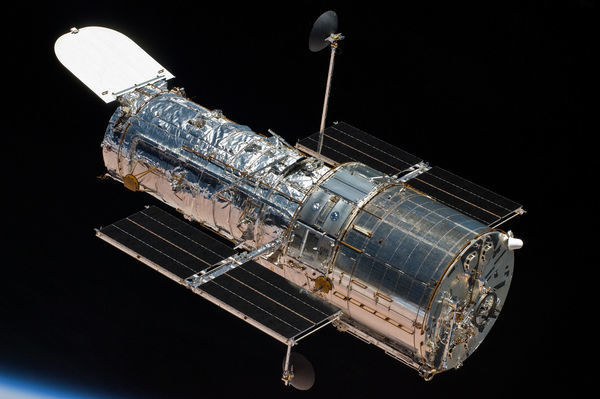
Hubble Moving Closer to Normal Science Operations
"NASA took great strides last week to press into service a Hubble Space Telescope backup gyroscope (gyro) that was incorrectly returning extremely high rotation rates. The backup gyro was turned on after the spacecraft entered safe mode due to a failed gyro on Friday, Oct. 5. The rotation rates produced by the backup gyro have since reduced and are now within an expected range. Additional tests will be performed to ensure Hubble can return to science operations with this gyro. A gyro is a device that measures the speed at which the spacecraft is turning, and is needed to help Hubble turn and lock on to new targets. A wheel inside the gyro spins at a constant rate of 19,200 revolutions per minute." [...]
Outras Notícias
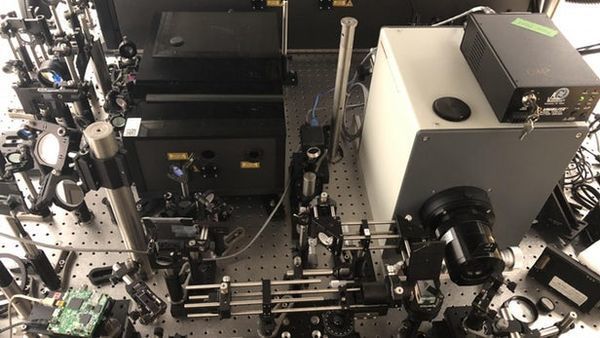
World's fastest camera freezes time at 10 trillion frames per second
"What happens when a new technology is so precise that it operates on a scale beyond our characterization capabilities? For example, the lasers used at INRS produce ultrashort pulses in the femtosecond range (10–15 s) that are far too short to visualize. Although some measurements are possible, nothing beats a clear image, says INRS professor and ultrafast imaging specialist Jinyang Liang. He and his colleagues, led by Caltech’s Lihong Wang, have developed what they call T-CUP: the world’s fastest camera, capable of capturing ten trillion (1013) frames per second (Fig. 1). This new camera literally makes it possible to freeze time to see phenomena—and even light!—in extremely slow motion." [...]

Extend Battery Life in Portable Devices with New Ultra-low Iq LDO
"Device prolongs battery life up to four times longer than traditional ultra-low Iq LDOs Portable electronic devices are now expected to run for months or even years on a single battery, making minimizing power consumption in these applications a top priority for product designers. Microchip Technology Inc. (Nasdaq: MCHP) today introduced a linear Low Dropout (LDO) regulator that extends battery life in portable devices up to four times longer than traditional ultra-low quiescent (Iq) LDOs. With an ultra-low Iq of 250 nanoamps (nA) versus the approximately 1 uA operation of traditional devices, the MCP1811 LDO reduces quiescent current to save battery life, enabling end users to recharge or replace batteries less often. Ideal for IoT and battery-operated applications such as wearables, remotes and hearing aids, the 250 nA ultra-low Iq reduces power consumption in applications by minimizing standby or shutdown current. Reducing standby power consumption is critical in remote, battery-powered sensor nodes, where battery replacement is difficult and operating life requirements are high. Available in package options as small as 1 x 1 millimeter (mm), the MCP1811 consumes minimal board space to meet the needs of today’s compact portable electronic designs." [...]

Mbed OS 5.10.2 released
"We are pleased to announce the Mbed OS 5.10.2 release is now available. This is the latest patch release based on the feature set that Mbed OS 5.10 introduces. Summary In this release we have added support for TMPM4G9, RapidIoT and Laird BL654. We are currently focusing on improving the quality of our documentation, so there are a number of documentation fixes in this release and upcoming ones. There are a number of reported issues that we have fixed: A 4/8 byte alignment error in the device scatter files. On the STM32F1 family of devices the set_time function was not setting the time correctly." [...]
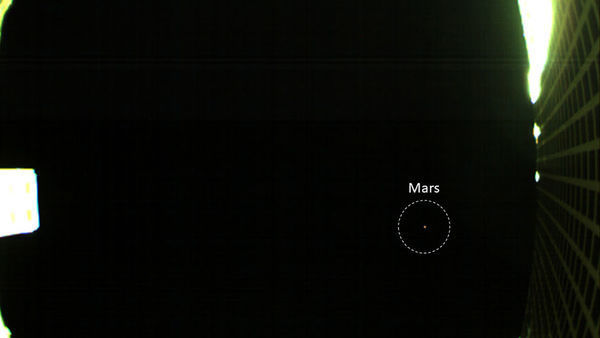
NASA's First Image of Mars from a CubeSat
"NASA's MarCO mission was designed to find out if briefcase-sized spacecraft called CubeSats could survive the journey to deep space. Now, MarCO - which stands for Mars Cube One - has Mars in sight. One of the twin MarCO CubeSats snapped this image of Mars on Oct. 3 - the first image of the Red Planet ever produced by this class of tiny, low-cost spacecraft. The two CubeSats are officially called MarCO-A and MarCO-B but nicknamed "EVE" and "Wall-E" by their engineering team. A wide-angle camera on top of MarCO-B produced the image as a test of exposure settings. The MarCO mission, led by NASA's Jet Propulsion Laboratory in Pasadena, California, hopes to produce more images as the CubeSats approach Mars ahead of Nov. 26." [...]

NASA's Juno Mission Detects Jupiter Wave Trains
"Massive structures of moving air that appear like waves in Jupiter's atmosphere were first detected by NASA's Voyager missions during their flybys of the gas-giant world in 1979. The JunoCam camera aboard NASA's Juno mission to Jupiter has also imaged the atmosphere. JunoCam data has detected atmospheric wave trains, towering atmospheric structures that trail one after the other as they roam the planet, with most concentrated near Jupiter's equator. The JunoCam imager has resolved smaller distances between individual wave crests in these trains than ever seen before. This research provides valuable information on both the dynamics of Jupiter's atmosphere and its structure in the regions underneath the waves. "JunoCam has counted more distinct wave trains than any other spacecraft mission since Voyager," said Glenn Orton, a Juno scientist from NASA's Jet Propulsion Laboratory in Pasadena, California." [...]
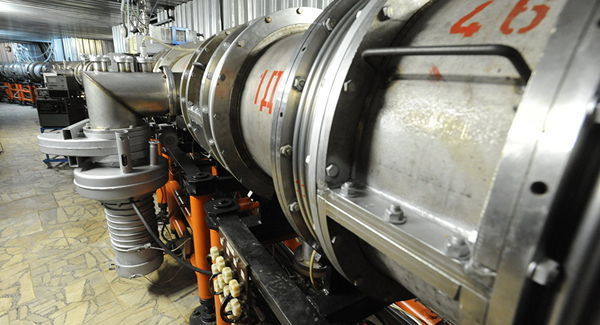
China to build world's largest supercollider
"Chinese scientists plan to build the world's most powerful electron collider by 2030, a project that will cost 35 billion yuan ($5.05 billion), the project's leading scientist told the Global Times on Monday. The location of the project has yet to be decided, Wang Yifang, director of the Chinese Academy of Sciences Institute of High Energy Physics in Beijing, told the Global Times on Monday. "The collider will have a circumference of 100 kilometers, with a center-mass energy up to 240 giga electron-volts both setting a world record," Wang said. The collider should produce more Higgs boson particles, the essential, inevitable quarry of modern particle physics, He noted. The conceptual design for the Circular Electron Positron Collider (CEPC) passed international examinations in September, Wang said. The collider will provide light at a million electron-volt power level, creating the most advanced conditions for research on new materials and nuclear physics, Wang explained." [...]

Making creative tools more accessible for everyone
"Before I got into the accessibility field, I worked as an art therapist where I met people from all walks of life. No matter the reason why they came to therapy, almost everyone I met seemed to benefit from engaging in the creative process. Art gives us the ability to point beyond spoken or written language, to unite us, delight, and satisfy. Done right, this process can be enhanced by technology—extending our ability and potential for play. One of my first sessions as a therapist was with a middle school student on the autism spectrum. He had trouble communicating and socializing with his peers, but in our sessions together he drew, made elaborate scenes with clay, and made music." [...]
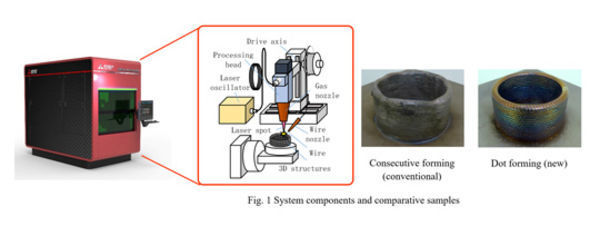
Mitsubishi Electric's New Dot Forming Technology Achieves High-precision Three-dimensional Metal Shaping
"Raises productivity in wide range of applications, including part manufacturing and build-up repair Mitsubishi Electric Corporation announced today that it has developed a unique dot forming technology that realizes high-precision shaping by combining laser, computer numerical control (CNC) and computer aided manufacturing CAM technologies in 3D printers. The technology produces high-quality three-dimensional (3D) parts with few voids at high speed, employing a laser wire directed-energy deposition (DED) method, which is an additive-manufacturing process that uses focused thermal energy to fuse materials as they are deposited. Mitsubishi Electric believes that its new technology will raise productivity in a wide range of applications, such as the "near-net" (near-final) shaping of aircraft and automobile parts and build-up repairs. A three-dimensional metal shaping machine incorporating the new technology will be exhibited for reference at the 29th Japan International Machine Tool Fair (JIMTOF2018), which will be held at the Tokyo Big Sight exhibition complex beginning November 1. Mitsubishi Electric expects to launch a commercial version within the fiscal year ending in March 2021. 1) High-quality 3D parts formed at high speed - High-quality 3D parts with few voids can be formed at high speed using the laser wire DED method, which supplies metal wire directly to the laser-irradiated part for build-up shaping." [...]

Hyundai Motor Group Ventures Further Into New Robotics Industry
"Hyundai Motor Group has ventured further into the high-value robotics industry of the future by commencing development of Hyundai Vest Exoskeleton (H-VEX) wearable industrial robots. Following the Hyundai Chairless Exoskeleton (H-CEX) demonstration conducted in the Hyundai-KIA North American factory last August, the company plans to verify H-VEX’s success through extensive testing at the end of 2018. In early 2018, Hyundai selected Robot-Artificial Intelligence as one of five areas of future innovation growth. The company established a designated robotics team in its strategic technology headquarters to focus on the development of related tech, and is expanding its cooperation with associated sectors. The robotics field not only offers future mobility solutions, but also presents alternative solutions to reduce productivity decline in the workforce. Hyundai plans to utilize its extensive technological database collected from autonomous vehicle production experience to drive the company’s success in the robotics field." [...]
Ciência e Tecnologia
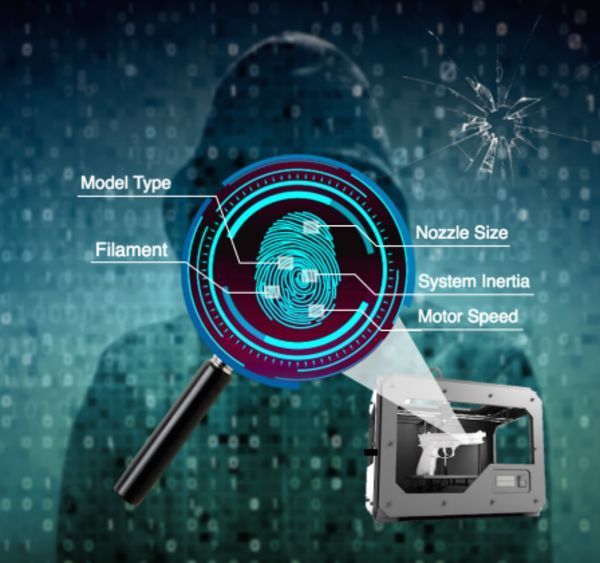
3D printers have 'fingerprints,' a discovery that could help trace 3D-printed guns, counterfeit goods
"Like fingerprints, no 3D printer is exactly the same. That’s the takeaway from a new University at Buffalo-led studyDownload pdf that describes what’s believed to be the first accurate method for tracing a 3D-printed object to the machine it came from. The advancement, which the research team calls “PrinTracker,” could ultimately help law enforcement and intelligence agencies track the origin of 3D-printed guns, counterfeit products and other goods. “3D printing has many wonderful uses, but it’s also a counterfeiter’s dream. Even more concerning, it has the potential to make firearms more readily available to people who are not allowed to possess them,” says the study’s lead author Wenyao Xu, PhD, associate professor of computer science and engineering in UB’s School of Engineering and Applied Sciences. The study will be presented in Toronto at the Association for Computing Machinery’s Conference on Computer and Communications Security, which runs from Oct. 15-19." [...]
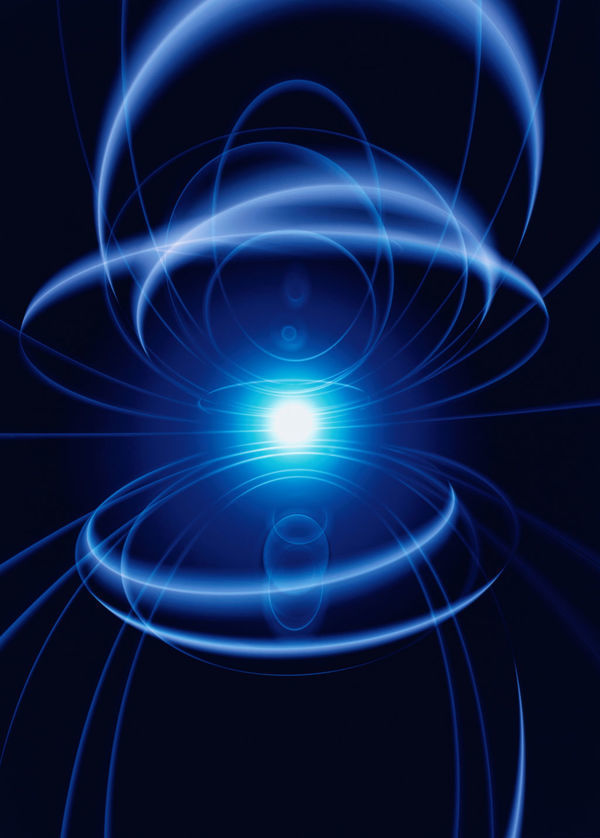
Anomalous Hall effect tested in defect-free thin-film magnetic semiconductor
"An improved understanding of why electrons take a curved path through magnetic materials could aid the design of the electronic devices of tomorrow Understanding the quantum behavior of electrons is of profound interest to researchers because it could both pave the way for the low-energy, super-fast computers of tomorrow and explain fundamental physical phenomena. Now, RIKEN researchers have used a high-quality material to better come to grips with the quantum transport of electrons in magnetic semiconductors1. Besides their electrical charge, electrons have another inherent property that is just as important—their spin. While all electrons have the same charge, their spin can take one of two values. This is often visualized as either an intrinsic clockwise or counter-clockwise rotation, or an up or a down arrow. This property could be useful for information processing in an emerging computing technology known as spintronics." [...]

Harder 3D-printed tools - Researchers from Dresden introduce new process for hardmetal industry
"Extremely hard tools are required in forming technology, metal-cutting and process engineering. They are conventionally made by powder pressing. Although this achieves a high degree of hardness, it is often necessary to carry out a complex and therefore expensive post-processing. Additive manufacturing enables complex geometries, but has been limited in terms of hardness and component size so far. Researchers at the Fraunhofer IKTS in Dresden have now adapted the 3D printing process Fused Filament Fabrication for hardmetals. The development meets all requirements for the first time." [...]
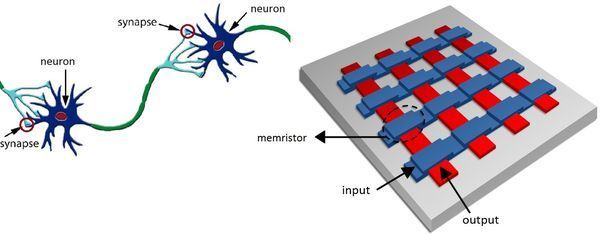
Understanding the building blocks for an electronic brain
"Computer bits are binary, with a value of 0 or 1. By contrast, neurons in the brain can have all kinds of different internal states, depending on the input that they received. This allows the brain to process information in a more energy-efficient manner than a computer. University of Groningen (UG) physicists are working on memristors, resistors with a memory, made from niobium-doped strontium titanate, which mimic how neurons work. Their results were published in the Journal of Applied Physics on 21 October. The brain is superior to traditional computers in many ways." [...]

Power-efficient generation of ultrashort pulses on a chip
"Ultrashort optical pulses are useful for a wide range of applications such as processing materials via strong light-matter interaction. In the frequency domain, a train of pulses represents an equidistant grid of frequency lines, known as an “optical frequency comb”, which is essential for timing, metrology and spectroscopy. Though frequency combs were first demonstrated in complex mode-locked laser setups, it was demonstrated more than a decade ago that they can also be generated in microresonators with sufficiently high quality (Q) factor. This technology, known as “soliton microcomb”, has been rapidly evolving in the past years, yielding new techniques in compact forms and simplified structures, such as frequency synthesis and dual comb spectroscopy. A key goal in the field is to build high-Q microresonators on a microphotonic chip that can be integrated into electronic devices for portable applications. To this end, modern CMOS-compatible fabrication techniques must be utilized, which have been developed for decades and used in the semiconductor industry." [...]
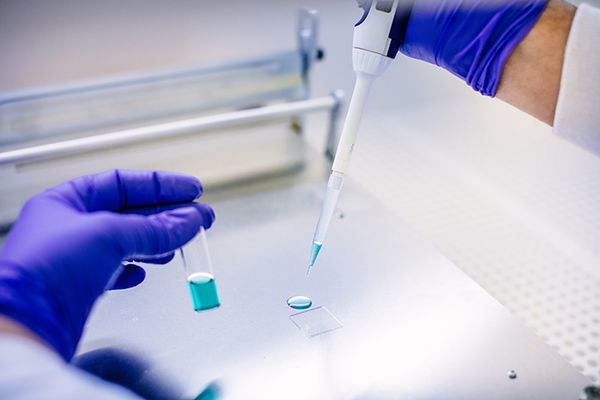
Basking in a quantum efficiency glow
"New houses could soon deliver on a long-awaited promise and incorporate windows or roof tiles that harvest solar energy, research conducted at KAUST suggests. Derya Baran, at the KAUST Solar Center, and her colleagues have developed a photovoltaic organic material that captures light efficiently and that potentially could be coated on building materials. Traditional roof-mounted solar panels are made from slabs of silicon, but organic molecules can also capture energy from sunlight. These molecules could be formulated as inexpensive printable inks that are applied to regular building components such as windows. Turning sunlight into electricity is a multistep process, and the key to developing high-performance organic photovoltaic materials has been to find organic molecules that are good at every step, Baran explains. When light strikes an organic photovoltaic material it knocks free an electron, leaving behind a positively charged hole." [...]
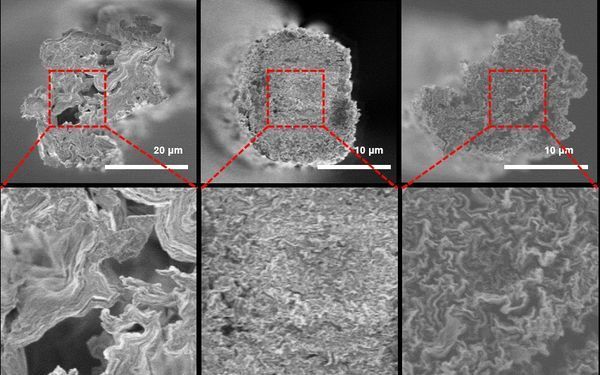
Mussel-Inspired Defect Engineering Enhances the Mechanical Strength of Graphene Fibers
"Researchers demonstrated the mussel-inspired reinforcement of graphene fibers for the improvement of different material properties. A research group under Professor Sang Ouk Kim applied polydopamine as an effective infiltrate binder to achieve high mechanical and electrical properties for graphene-based liquid crystalline fibers. This bio-inspired defect engineering is clearly distinguishable from previous attempts with insulating binders and proposes great potential for versatile applications of flexible and wearable devices as well as low-cost structural materials. The two-step defect engineering addresses the intrinsic limitation of graphene fibers arising from the folding and wrinkling of graphene layers during the fiber-spinning process. Bio-inspired graphene-based fiber holds great promise for a wide range of applications, including flexible electronics, multifunctional textiles, and wearable sensors. In 2009, the research group discovered graphene oxide liquid crystals in aqueous media while introducing an effective purification process to remove ionic impurities." [...]
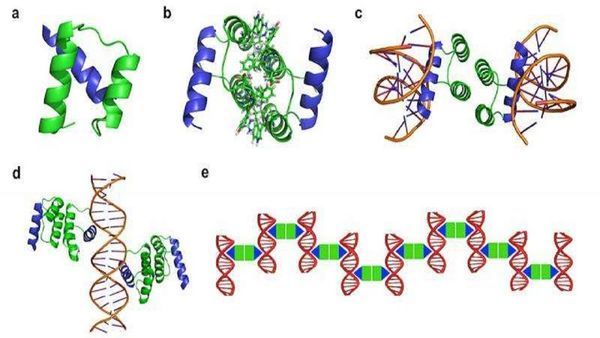
Scientists Make New 'Green' Electronic Polymer-Based Films with Protein Nanowires
"An interdisciplinary team of scientists at the University of Massachusetts Amherst has produced a new class of electronic materials that may lead to a “green,” more sustainable future in biomedical and environmental sensing, say research leaders microbiologist Derek Lovley and polymer scientist Todd Emrick. They say their new work shows it is possible to combine protein nanowires with a polymer to produce a flexible electronic composite material that retains the electrical conductivity and unique sensing capabilities of protein nanowires. Results appear in the journal Small. Protein nanowires have many advantages over the silicon nanowires and carbon nanotubes in terms of their biocompatibility, stability, and potential to be modified to sense a wide range of biomolecules and chemicals of medical or environmental interest, says Lovley. However, these sensor applications require that the protein nanowires be incorporated into a flexible matrix suitable for manufacturing wearable sensing devices or other types of electronic devices. As Lovley explains, “We have been studying the biological function of protein nanowires for over a decade, but it is only now that we can see a path forward for their use in practical fabrication of electronic devices.” Postdoctoral research Yun-Lu Sun, now at the University of Texas at Austin, discovered the proper conditions for mixing protein nanowires with a non-conductive polymer to yield the electrically conductive composite material." [...]
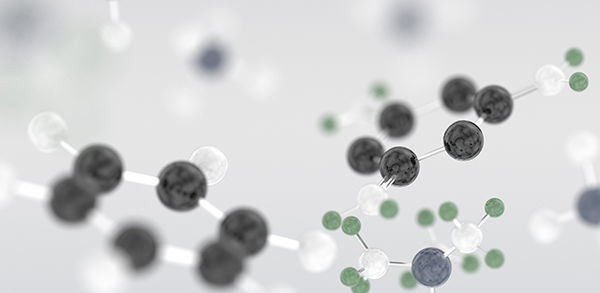
No Assembly Required: Self-assembling Silicone-based Polymers
"Scientists at Tokyo Institute of Technology, RIKEN and Tohoku University have developed a silicone polymer chain that can self-assemble into a 3D periodic structure. They achieved this by using their recently reported self-assembling triptycene molecules to modify the ends of the polymer chains. The development of novel soft materials for various optical, mechanical, heat/charge transportation and nanotechnological applications would greatly benefit from techniques to create polymer assemblies in periodically ordered structures. Such ordered structures are created using molecular scaffolds or by modifying certain parts of the polymers used so that they self-assemble into the desired shape. However, researchers nowadays consider that terminal functionalization (modifying both ends of a polymer chain) is not very effective for creating periodically ordered structures. That's why scientists from Tokyo Institute of Technology (Tokyo Tech), led by Fumitaka Ishiwari, were interested in revisiting one of their recently developed triptycene molecules, called 1,8,13-Trip." [...]

Modifying a virtual environment in just a few clicks
"Wearing a virtual reality headset and using manual controllers, you can use Imverse’s new software to select tools that let you bring depth, cut, paste, paint and zoom in and out – much like in a photo editor. Your virtual environment can therefore respond to your creative flourishes, even from a 2D or 360 photo: in an instant, your surroundings can change as you push back walls, create space here and there, add furniture and experiment with colors. The beta version of this software program will be available online starting today. Creating a 3D scenario ten times faster Imverse’s time-saving technology could come in handy in a wide range of fields, such as real estate, architects, graphic designers, decorators and photgraphers – engineers could even use it for certain kinds of modeling. But the EPFL spin-off is initially setting its sights on the movie, medias and video game industry, where its software could be used for such tasks as sketching out scenarios in 3D, previewing movie sets and how they could change during a film and mapping out the locations of cameras and actors. “Producers can use it to take a photo of a real set, convert the 360 degrees image into a 3D environment and then, using virtual reality, edit it in order to visualize the scene before they film it." [...]

Improving the performance of recycled materials in roads
"In the future, our highways and neighborhood streets could be paved with shredded car tires, discarded roof shingles and even old roads ground-up into gravel. The idea of recycling materials is not new in pavement technology, but recycled road performance and cost are often prohibitive. A Missouri S&T researcher knows he can change that. Dr. Magdy Abdelrahman, the Missouri Asphalt Pavement Association Professor in civil, architectural and environmental engineering at S&T, says that by recycling either existing pavement or other waste materials into asphalt, we can slow the depletion of aggregate. “New construction resources are rapidly diminishing, so we must incorporate industrial recycling materials into our research,” says Abdelrahman. “When we start recycling in engineering, many technical challenges begin to come into play." [...]

Should a self-driving car kill the baby or the grandma? Depends on where you're from
"The infamous “trolley problem” was put to millions of people in a global study, revealing how much ethics diverge across cultures. In 2014 researchers at the MIT Media Lab designed an experiment called Moral Machine. The idea was to create a game-like platform that would crowdsource people’s decisions on how self-driving cars should prioritize lives in different variations of the “trolley problem.” In the process, the data generated would provide insight into the collective ethical priorities of different cultures. The researchers never predicted the experiment’s viral reception. Four years after the platform went live, millions of people in 233 countries and territories have logged 40 million decisions, making it one of the largest studies ever done on global moral preferences. A new paper published in Nature presents the analysis of that data and reveals how much cross-cultural ethics diverge on the basis of culture, economics, and geographic location." [...]
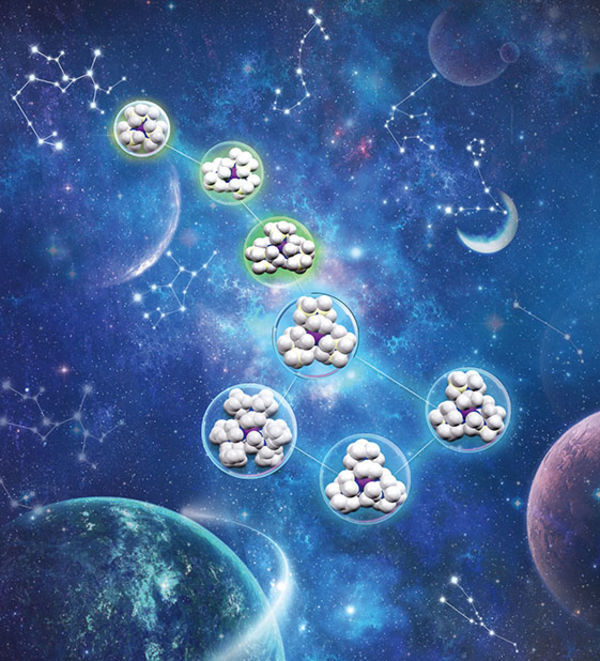
Shining Light on the Separation of Rare Earth Metals
"New studies identify key molecular characteristics to potentially separate rare earth metals cleanly and efficiently with light. The Science Inside smartphones and computer displays are metals known as the rare earths. Mining and purifying these metals involves waste- and energy-intense processes. Better processes are needed. Previous work has shown that specific rare earth elements absorb light energy that can change their chemical behavior and make them easier to separate. Now, researchers have revealed how certain molecular structures can improve the efficiency of this light-driven chemistry to separate cerium, a rare earth element." [...]
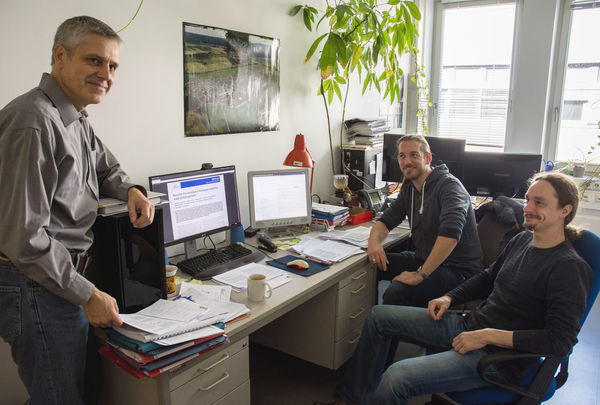
Materials for the Photonics of Tomorrow
"Novel, atomically thin materials could be used in the future as energy-efficient and versatile light sources. Physicists from the University of Bremen have now published the results of their research into these materials in the internationally renowned journal “Nature Physics.” Motivated by the success story of the super-thin “miracle material” graphene, which was awarded the Nobel Prize for Physics a few years ago, researchers in chemistry and physics today are continuously discovering new, atomically thin materials. They consist of lattices of atoms that are only slightly thicker than the individual atoms themselves. The pioneer graphene is composed of a single layer of carbon atoms. Although it is excellently suited for electronics, it is not suitable for optical applications. Now there are new atomically thin materials that are suitable for highly miniaturized and extremely energy-efficient optical components." [...]

UTA researchers optimize electricity distribution networks
"A team of researchers from The University of Texas at Arlington is combining several principles of machine learning to enable machines to control power networks and other complex dynamic systems more effectively during unexpected events. Frank Lewis, the Moncrief-O’Donnell Professor of Electrical Engineering, Yan Wan and Ali Davoudi, associate professors of electrical engineering, are using a $220,000 Early-concept Grant for Exploratory Research, or EAGER, from the National Science Foundation to use real-time learning to create a unified theory on how to optimize microgrid capacity through DC distribution. Junfei Xie, an assistant professor of computer science at Texas A&M University – Corpus Christi, is assisting the team with data analysis. Microgrid capacity in the United States is strained and DC, or direct current, distribution networks are emerging as alternatives to the current standard AC, or alternating current, networks. The networks are critical to the scalable integration of renewable energy resources and fleets of electric vehicles. All of the systems operating in a complex environment act on each other." [...]

Quantum network to test unhackable communications
"National labs, UChicago to create one of world’s longest fiber-optic links to ‘teleport’ information As the number of hacks and security breaches rapidly climbs, scientists say there may be a way to make a truly unhackable network by using the laws of quantum physics. To explore the concept, scientists are creating a network in the Chicago area that taps the principles of quantum physics to send information. Such a link could one day form the basis for a truly secure network, which would have wide-ranging impact on communications, computing and national security. The federal government estimates that malicious cyber activity cost the U.S. economy between $57 billion and $109 billion in 2016. The quantum network, supported by the U.S. Department of Energy, will stretch between the DOE’s Argonne National Laboratory and Fermi National Accelerator Laboratory—a connection that is expected to be among the longest in the world to send secure information using quantum physics. The experiment will “teleport” information across a 30-mile distance, as particles change their quantum states instantaneously rather than traveling between two points." [...]

Discovery of new superconducting materials using materials informatics
"A NIMS-Ehime University joint research team succeeded in discovering new materials that exhibit superconductivity under high pressures using materials informatics (MI) approaches (data science-based material search techniques). This study experimentally demonstrated that MI enables efficient exploration of new superconducting materials. MI approaches may be applicable to the development of various functional materials, including superconductors. Superconducting materials which enable long-distance electricity transmission without energy loss in the absence of electrical resistance?are considered to be a key technology in solving environmental and energy issues. The conventional approach by researchers searching for new superconducting materials or other materials has been to rely on published information on material properties, such as crystalline structures and valence numbers, and their own experience and intuition. However, this approach is time-consuming, costly and very difficult because it requires extensive and exhaustive synthesis of related materials." [...]

Scientists Unravel the Mysteries of Polymer Strands in Fuel Cells
"Hydrogen fuel cells offer an attractive source of continuous energy for remote applications, from spacecraft to remote weather stations. Fuel cell efficiency decreases as the Nafion membrane, used to separate the anode and cathode within a fuel cell, swells as it interacts with water. A Russian and Australian collaboration has now shown that this Nafion separator membrane partially unwinds some of its constituent fibers, which then protrude away from the surface into the bulk water phase for hundreds of microns. The research team was led by a group in Russia together with Australian professor Barry Ninham from Australian National University in Canberra, a leading specialist in colloid and interface science. Their results were published this week in The Journal of Chemical Physics, from AIP Publishing. The research team began this project to examine a proposed hypothesis that attributed a new state of water to explain swelling of the Nafion membrane." [...]

Artificial intelligence controls quantum computers
"Neural networks enable learning of error correction strategies for computers based on quantum physics Quantum computers could solve complex tasks that are beyond the capabilities of conventional computers. However, the quantum states are extremely sensitive to constant interference from their environment. The plan is to combat this using active protection based on quantum error correction. Florian Marquardt, Director at the Max Planck Institute for the Science of Light, and his team have now presented a quantum error correction system that is capable of learning thanks to artificial intelligence. In 2016, the computer program AlphaGo won four out of five games of Go against the world’s best human player. Given that a game of Go has more combinations of moves than there are estimated to be atoms in the universe, this required more than just sheer processing power." [...]

U-M researchers develop small device that bends light to generate new radiation
"University of Michigan physicists have led the development of a device the size of a match head that can bend light inside a crystal to generate synchrotron radiation in a lab. When physicists bend very intense beams of charged particles in circular orbits near the speed of light, this bending throws off bits of light, or X-rays, called synchrotron radiation. The U-M-led researchers used their device to bend visible light to produce light with a wavelength in the terahertz range. This range of wavelength is considerably larger than that of visible light, but much smaller than the waves your microwave produces—and can penetrate clothing. Synchrotron radiation is usually generated at large-scale facilities, which are typically the size of several football stadiums. Instead, U-M researchers Roberto Merlin and Meredith Henstridge’s team developed a way to produce synchrotron radiation by printing a pattern of microscopic gold antennae on the polished face of a lithium tantalate crystal, called a metasurface." [...]

New Material, Manufacturing Use Sun's Heat for Cheaper Renewable Electricity
"Solar power accounts for less than two percent of U.S. electricity, but could make up more than that if the cost of electricity generation and energy storage for use on cloudy days and at nighttime were cheaper. A Purdue University-led team that included researchers from Georgia Tech have developed a new material and manufacturing process that would make one way to use solar power – as heat energy – more efficient in generating electricity. The innovation is an important step for putting solar heat-to-electricity generation in direct cost competition with fossil fuels, which generate more than 60 percent of electricity in the U.S. “Storing solar energy as heat can already be cheaper than storing energy via batteries, so the next step is reducing the cost of generating electricity from the sun's heat with the added benefit of zero greenhouse gas emissions,” said Kenneth Sandhage, Purdue’s Reilly Professor of Materials Engineering. The research, which was done at Purdue in collaboration with the Georgia Institute of Technology, the University of Wisconsin-Madison and Oak Ridge National Laboratory, published in the journal Nature on October 18. Solar power doesn't only generate electricity via panels in farms or on rooftops. Another option is concentrated power plants that run on heat energy." [...]

Scientists Review Recent Advances in Flexible Perovskite Solar Cell
"With the rapid development of advanced technologies in electronics industry, the demand for portable electronics, shaped display devices and wearable electronic textiles is ever increasing. Flexible solar cells are thereby receiving more and more attention for their favorable traits including flexibility, light weight, portability and compatiblity with curved surfaces. Mass production of flexible solar cells can be achieved by continuous roll-to-roll technology. Therefore, research on flexible perovskite solar cells has been accelerated, and the research field mainly focuses on how to improve efficiency, increase active area, reduce cost, make low-temperature preparation, and realize mass production. A research group led by Prof. LIU Shengzhong from the Dalian Institute of Chemical Physics (DICP) of the Chinese Academy of Sciences achieved a series of innovations in perovskite solar cells, and repetitiously created an efficiency of world record for flexible, rigid planar-type and two-dimensional perovskite solar cells. Recently, LIU's group, in collaboration with Prof. YANG Dong’s group from Shaanxi Normal University, published a review article on providing a comprehensive summary of the prior art with perspective discussion on application cost, potential opportunities and challenges in flexible perovskite solar cells." [...]
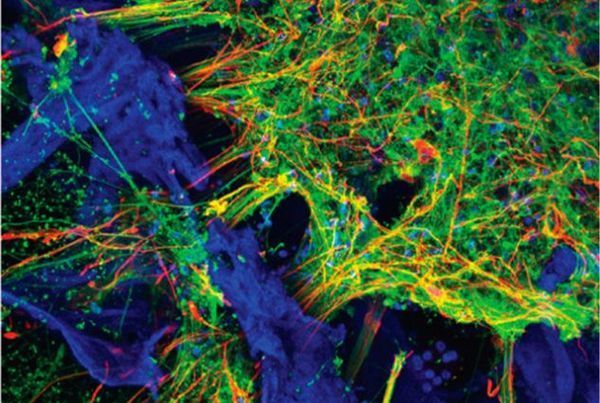
Tufts scientists grow functioning human neural networks in 3D from stem cells
"Neural models could improve understanding of neurodegenerative and other diseases, and facilitate discovery of treatments A team of Tufts University-led researchers has developed three-dimensional (3D) human tissue culture models for the central nervous system that mimic structural and functional features of the brain and demonstrate neural activity sustained over a period of many months. With the ability to populate a 3D matrix of silk protein and collagen with cells from patients with Alzheimer’s disease, Parkinson’s disease, and other conditions, the tissue models allow for the exploration of cell interactions, disease progression and response to treatment. The development and characterization of the models are reported today in ACS Biomaterials Science & Engineering, a journal of the American Chemical Society. The new 3D brain tissue models overcome a key challenge of previous models –the availability of human source neurons. This is due to the fact that neurological tissues are rarely removed from healthy patients and are usually only available post-mortem from diseased patients. The 3D tissue models are instead populated with human induced pluripotent stem cells (iPSCs) that can be derived from many sources, including patient skin." [...]
Documentação
A documentação é parte essencial do processo de aprendizagem e a Internet além de artigos interessantes de explorar também tem alguma documentação em formato PDF interessante de ler. Todos os links aqui apresentados são para conteúdo disponibilizado livremente pelo editor do livro.

The MagPI 75
"This issue, in celebration of getting to number 75, we’re counting down 75 of the greatest Raspberry Pi projects, 50 of which were voted for by you! Who won? Read The MagPi 75 to find out… Also this issue, we have an in-depth article on using the Raspberry Pi Camera Module, how to build a secret chat device, and tips for the new Raspberry Pi TV HAT! " [...]
Projetos Maker
Diversos Projetos interessantes.
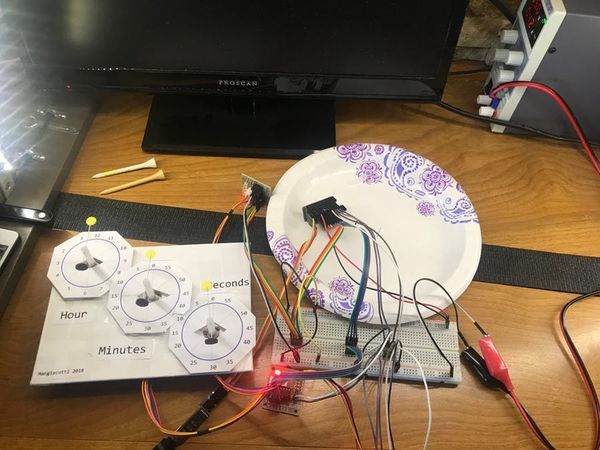
Backward Running Analog Clock with Three Steppers
"Use three stepper motors to make the classic analog clock movement in the opposite direction. Story I wanted to make an analog clock that ran counter-clockwise. A nice lesson to not assume the normal is very normal at all. There really is no reason other than convention for a clock to turn the direction around the circle it does. Since the classic DIY positioning servos I've implemented have a 180-degree working range, I decided to use a stepper motor. A circle is broken into 360 degrees also by convention only." [...]
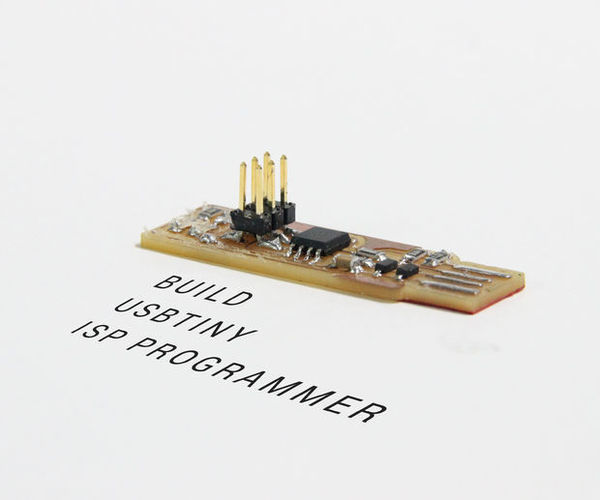
How to Build a USBTiny ISP Programmer : by Utilizing CNC PCB Milling Machine
"Did you think about how to build your own electronic project from scratch? Doing electronics projects is so exciting and fun for us, makers. But most makers and hardware enthusiast who are just stepping ahead to the maker culture built their projects with development boards, breadboards, and modules. This way, we can build the rapid prototype version of our project. But it shall be bulk in size and messed with breadboard wirings. Similar case while using a Generic PCB board, it also looks messy and unprofessional!" [...]
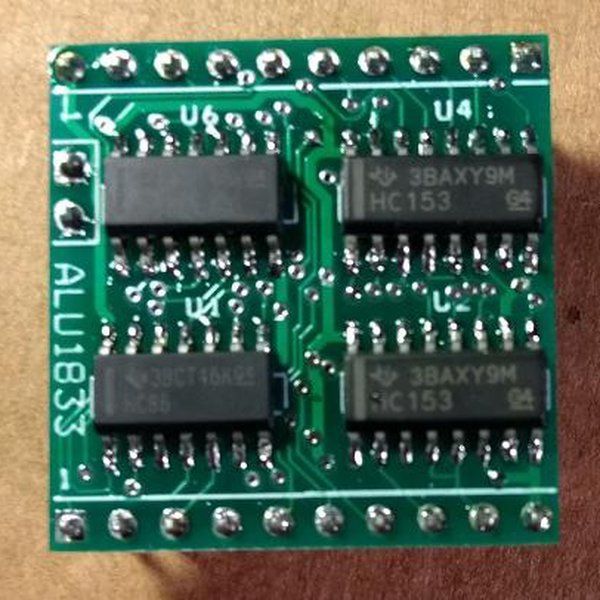
4 bit TTL ALU
"Alternative for the 74LS181 ALU, built in One Square Inch An ALU was designed with only 7 IC's. Its functions are ADD, SUB, XOR, XNOR, AND, OR, A, B, NOT A. It has a fast carry output. It can also do a few less used functions similar to what the 74181 can do. DETAILS This ALU ( Wikipedia: ALU ) could be used as a building block of a homebrew CPU. It has not many components." [...]

Using IoT to Remotely Control a Robotic Arm
"Controlling a robotic arm to pick up and drop objects is difficult enough, without IoT it would be near impossible to do this remotely. Story Introduction I really wanted to try was designing a robotic arm completely from scratch. There are many open-source designs available, but I thought it would be gratifying if I could design, build, and program one from nothing (and it was). I will talk about both the design and programming phases. But I will focus more on the programming side since it is not just controlling servo angles. Here is a link to video of final project in action - https://www.mathworks.com/videos/how-to-control-a-robotic-arm-from-a-remote-location-using-iot-1538564659095.html." [...]

Simon Style Memory Game with Agent Based Programming
"In this project I created a Simon style memory game using Agent based programming. Story In this project I created a Simon style memory game where the player has to repeat a sequence of button presses that gets longer and longer with every level. The game continues until the player pressing a wrong button or doesn't press a button fast enough. The beginning of the video quickly goes over how the physical box was put together. The outside was made out of some cardboard and 4 button assemblies that house a microswitch and an LED. The internals were soldered together onto a piece of perf board." [...]

The Open Woodwind Project
"An Electronic Aerophone with focus on usability as an instrument. An Electronic Aerophone with focus on creating an intuitive human interface for musicians playing real music. What is the Challenge this Project Addresses? Many engineers, hackers, and makers have focused on the hardware implementation of creating a musical gadget of some kind. The challenge is that most of these instruments are heavy on hardware and light on usability as an actual instrument. In the digital instrument market today there are very limited options for MIDI woodwind controllers." [...]

Room Temperature & Humidity Monitoring With the ESP32 and AskSensors Cloud
"In this tutorial you will learn how to monitor the temperature and humidity of your room or desk using the DHT11 and the ESP32 connected to the cloud. Our tutorials updates can be found here. DHT11 Specs:The DHT11 sensor is able to measure temperature from 0C to 50C (accuracy 2C) and humidity from 20% to 90% (accuracy 5%). The sensor requires 5V to operates properly and outputs temperature and humidity in serial data. So let's get started! " [...]

Control LED Board by Phone With NodeMCU ,ESP8266 and MAX7219
"I want to use phone to control the LED board as a turning signal. So, the ESP8266 will act as an Access Point, microcontroller and also a server. The web server will have a simple webpage with 3 buttons: Turn LEFT, Turn RIGHT, and Turn SOS. The text will scroll on the LED boards. For the code, Ive test two well maintenance libraries which are Arduino Core WiFi and ESP8266WebServer. The Core WiFi does not have good request handling function." [...]

The USB-C Explorer
"I've been quiet for a while, mostly because I've been working on a new USB-C board. Actually, the board didn't take the most time; that would be the firmware development. (Never underestimate firmware). The result is a cool piece of gear, a powerful development platform, and a stronger firmware library. The USB-C Explorer is a development board with everything needed to start working with USB Type-C. It contains a USB-C port controller and Power Delivery PHY chip, a microcontroller, and several options for user interaction." [...]
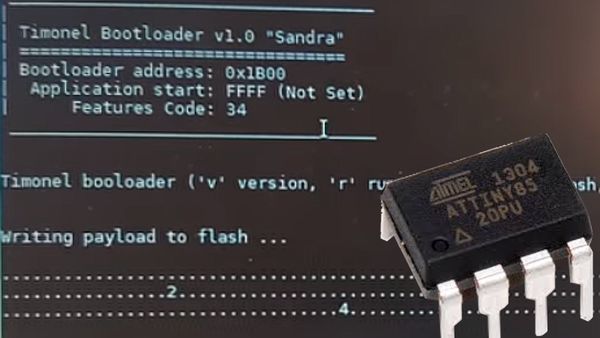
Timonel - ATtiny85 I2C Bootloader
"Timonel is an I2C bootloader for ATtiny85 microcontrollers. The aim is to enable AVR firmware updates in scenarios where there is a more powerful MCU (ESP8266, Arduino, RPi, BeagleBone, etc.) acting as I2C master and one or more Tiny85 as I2C slave performing peripheral functions. Some possible cases: A small robot controlled by Raspberry Pi where the specific functions of each limb are delegated to several Tiny85 through an I2C bus. Multi-sensor systems, where each Tiny85 is a node that handles one or more sensors. etc ..." [...]

RTC Bird Feeder
"Set the feeding time and feed your birds without considering the time by using a DS3231 module. Display date, time and temperature as well. Description I am keeping quails at my balcony but it, sometimes, was getting hard to feed them every day at the same time for conditioning them to lay eggs at the same time every morning and also it is a healthier way to increase egg production by changing the laying circle and the hatching process.For solving this problem, I made a bird feeder using a DS3231 module to get date, time and temperature variables properly. It displays four different screens to manage controls – the home screen, the feeding time set screen, the remaining time get screen and the status check screen – explained below. To give movement and rotation angle to the feeding system, I used a mini pan tilt with two mini servo motors(SG-90) and an external power supply to power them. After all these steps, I attached a cut in half Pringles cup containing quail food." [...]

Teensy Beats Shield
"An all-in-one, made to hack step sequencer built around the Teensy platform with LiPo charging, touch TFT, encoders, buttons, and RGB leds. A fellow coder and I were discussing portable audio sequencers like the Pocket Operator. While research the hacking possibilities for such a device, I found that they are completely closed source, and the existing firmware is read-protected. One post suggested that the Teensy and it's DSP capabilities could probably be used to build an open source device. I had a teensy 3.2 in my toolbox and decided to investigate further.This project aims to fill a void in open source handheld musical instruments. Being open source and built on a highly capable and extensible platform, hackers are free to modify, create, and remix this design for the common good." [...]

Pedalino
"Smart wireless MIDI foot controller for guitarists and more. I know. You are thinking: "yet another MIDI controller with Arduino". Pedalino is something new from any previous DIY projects and even better of commercial alternatives at a fraction of the cost. Not a guitarist or MIDI addicted? Don't worry there are a lot of interesting things here you can re-use for your projects." [...]
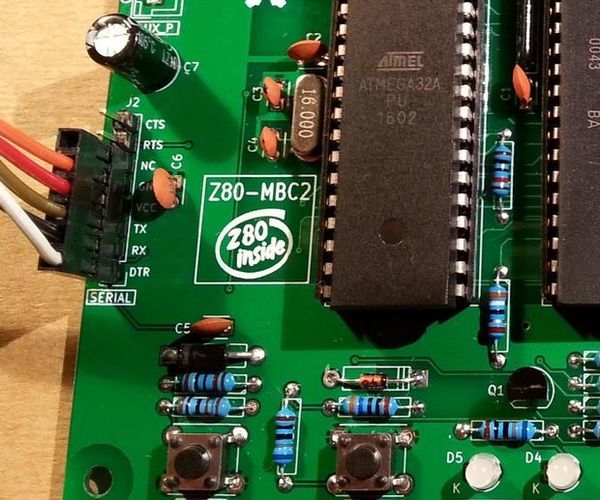
An Easy to Build Real Homemade Computer: Z80-MBC2!
"If you are curious about how a computer works and interacts with "external things", nowadays there are a lot of boards ready to play like Arduino or Raspberry and many others. But this boards have all the same "limit"... they hide the inner part because they use a MCU (Micro Controller Unit) or a SOC (System On Chip) so you can't touch the CPU, I/O, the internal bus and all these stuff that are what makes a computer work. There is an other option using some older part as 8bit CPUs (the so called "retrocomputing"). They are simple to understand and you can find a lot of documentation and books for free, and allow to build real computers with all the needed function blocks (CPU, I/O, RAM, ROM/EPROM, etc...). But generally they use hard to find parts, and require outdated instruments like an EPROM programmer and eraser or a GAL programmer, and simpler ones have very limited features. So I've mixed old and "new" parts to make an unique design that doesn't need any legacy EPROM programmer or fancy ICs, using easy to find components." [...]

Teensy midi euclidean sequencer
"this is a four channel usb MIDI euclidean sequencer. the sequencer is running on a Teensy 3.5. The setup consist of four rgb rotary encoders from Sparkfun, a Teensy, an ssd1306 lcd, four momentary buttons, and four 16led neopixel rings. The housing is an old case from a bottle of port, for now, and a piece of spare translucent perspex. Euclidean rhythms are explained by White Noises at the link below. there are three parts, 1. the total number of steps in the sequence 2. the number of hits within those steps 3. how far the sequence is offset by The euclidean algorithm is used to divide up the number of hits across the number of steps as evenly as possible." [...]

HTTPS for Makers
"Most of our IOT devices are insecure and vulnerable. It’s high time to learn how to make them more secure, also because unsecured devices will no more be able to use valuable services without using the HTTPS protocol. Already now, Google services, for example, do no more accept unsecured connections. But is it complicated? Let’s find out! Our ESP8266 and ESP32s support such secure connections." [...]

Attiny85 Keyboard for Under $8!
"This small keyboard was made with a few passive components, some blank PCB material, a buzzer, one LED, an Attiny85 and lots of love! The goal of the project was to make a keyboard that is fun and easy to make and that won't cost a fortune to make. " [...]

Petoi Nybble
"A laser-cut robot kitten that runs and learns from you. Hi there, This is Rongzhong from Pittsburgh. Eight months after my first post on OpenCat, I have quite a lot to update. Most importantly, I’m going to launch my first kitten on Indiegogo on Monday, Oct 22nd! The kitten’s name is Nybble. Links will be posted here, on my Twitter @PetoiCamp, or on Petoi.com." [...]

How to Use Keypad & LCD With Arduino to Make Arduino Calculator.
"In this tutorial I will be sharing how you can use 4x4 matrix keypad and 16x2 LCD with Arduino and use it to make a simple Arduino Calculator. So lets get started..." [...]

PCB Motor
"A smaller and cheaper open source brushless motor My open source PCB motor is my attempt to build a smaller, cheaper and easier to assemble micro brushless motor. What unique about this motor design is that the stator is printed on a 4-layer PCB board. The six stator poles are spiral traces wounded in a star configuration. Although these coils produce less torque compared to an iron core stator, the motor is still suitable for high-speed applications. It also has a 16mm diameter, 1.7mm thin 3d printed 4-pole rotor. So the total thickness of this axial flux motor adds up to 5mm (excluding the shaft) and weighs 1.5 grams." [...]
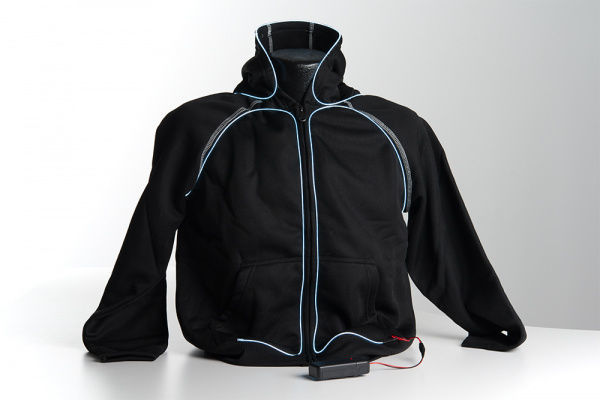
EL Wire Hoodie
"In this tutorial, we will sew standard EL wire onto a hoodie. " [...]

Raspberry Pi Audio Spectrum Display
"Use the DFRobot 64x64 RGB matrix panel with a Raspberry Pi 3 B+ to bring a dance party with you wherever you go! Story DFRobot reached out to me to do a sponsored project for their 64x64 RGB LED matrix. At first I had tried to use it with the ESP32 Firebeetle, but I couldn't get the library to work. So that meant using a Raspberry Pi 3 B+. " [...]
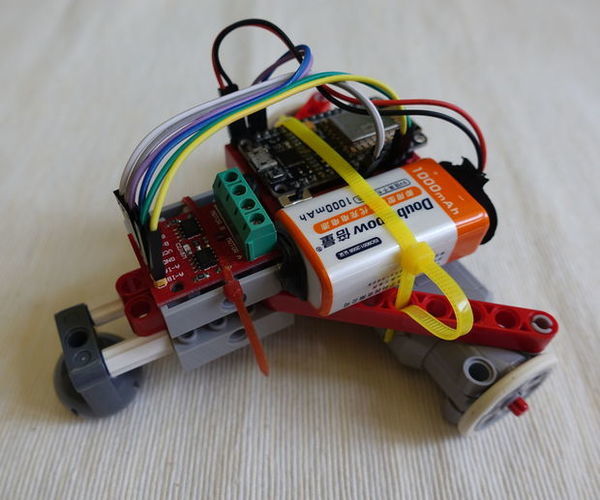
WiFi WebSocket Remote Robot
"This instructables show how to use ESP8266 module as a HTTP + Web Socket server to build a low lag time (fast response) WiFi remote robot. There are tons of WiFi remote robot on the web. Most of them have a simple web interface that can control the robot by a few arrow buttons. It is good enough for demonstrating the circuit works. However the response time is too slow even compare it with a few bucks RC car :( Every remote control command can be only 1 or 2 bytes, but a single HTTP request introduce hundreds bytes overhead and require wait establish a new connection each time. WebSocket can eliminate this overhead and get over 10 times of performance gain." [...]

Cardboard Circuit Playground Express Inchworm Robot
"Looking for a way to get kids designing and building their own simple robots? With just a Circuit Playground Express (CPX), a servo motor, and a few household materials, anyone can create a Cardboard Inchworm that meets the "sense-think-act" definition of a robot! Here's how: The Cardboard Inchworm can sense a loud sound using the audio sensor (microphone) built into the CPX. Then it can think about how to react, thanks to the CPX's powerful microcontroller brain. Finally, it can act by triggering the servo motor to repeatedly pull the front and back of the Inchworm together and letting them slide apart, creating a slow but steady crawling motion. The Inchworm is quick to build, and Microsoft MakeCode makes it super-easy to program!" [...]
That's all Folks!


